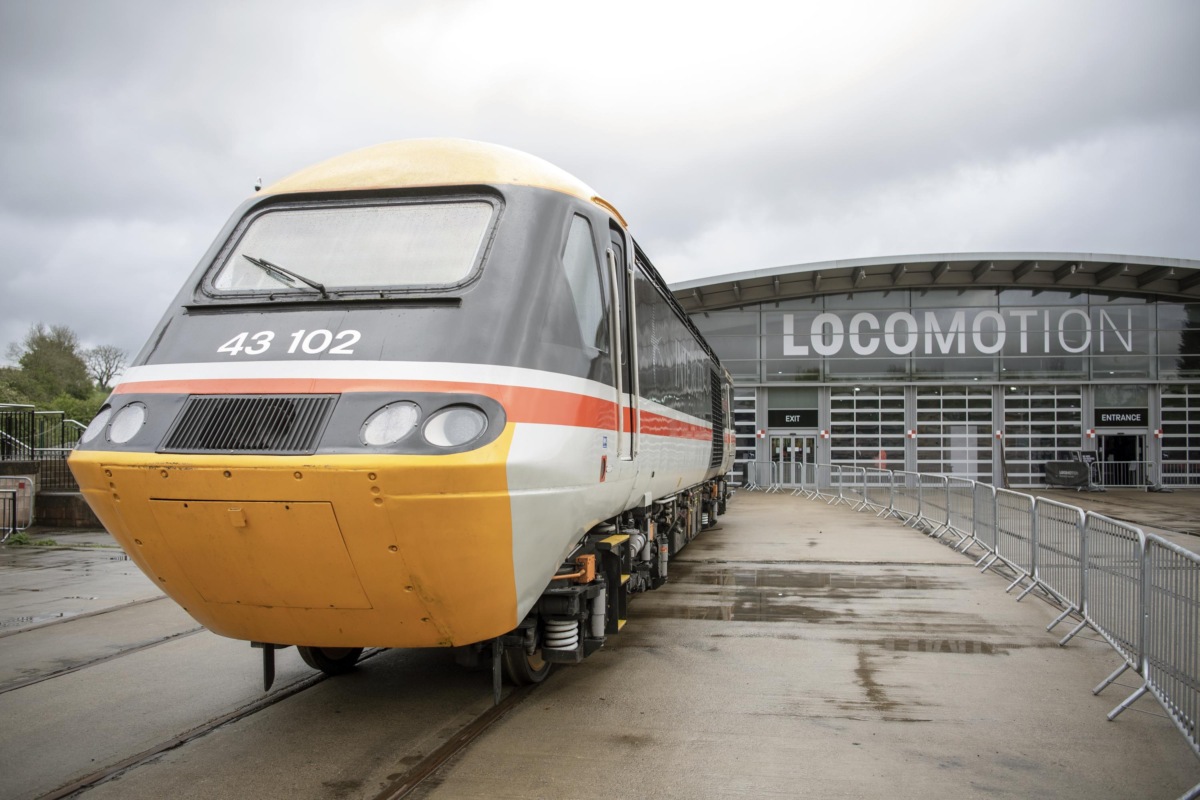Porterbrook, the rolling stock owner and asset manager, has today announced the donation of record breaking HST power car 43102 to the National Railway Museum.
In 1987 the power car broke the world speed record for a diesel-powered train, reaching 148.5mph between Northallerton and York. Decommissioned after 39 years’ frontline service it will find a new home at Locomotion in Shildon, County Durham.
The donation builds on Porterbrook’s ‘Gold’ partnership with the National Railway Museum which will see both organisations focus on inspiring the next generation of young engineers, as well as showcasing how the railway can become more accessible and sustainable.
Mary Grant, Chief Executive Officer of Porterbrook, said: “Whilst we are firmly focused on investing in the future of Britain’s railway, our partnership with the National Railway Museum shows that we also celebrate its successful past. As long-term asset owners with a fleet of 4,000 rail vehicles we are pleased to support the NRM as it explores how the railway contribute to our national life.
“Our wider collaboration with the National Railway Museum will include joint work on inspiring the next generation of young engineers as well as highlighting how the railway can sustainably contribute to delivering Net Zero.”
Judith McNicol, Director of The National Railway Museum, said: “The National Railway Museum is proud to have a strong and established relationship with Porterbrook, who have previously joined forces with us on projects such as Future Engineers, Rail Fest and the overhaul of Flying Scotsman. Porterbrook continue to work with us to engage our visitors, and in particular young people.”
“Our combined passion and resources ensure that we offer positive STEM experiences to bridge the skills gap with as many young people as possible. In the next phase of our relationship, we look forward to working with Porterbrook as a Gold level partner and continued collaboration to support the future of the UK rail industry.”
Locomotion and the National Railway Museum reopened to visitors on 19 May, following temporary closure during the Covid-19 pandemic. The donated power car will be placed by the entrance of Locomotion.
– ENDS –
NOTES TO EDITORS
With its distinctive wedge-shaped design, created by Sir Kenneth Grange, the Class 43 HSTs, also known as 125s, have been a familiar sight on the UK rail network. The first units were introduced in 1976 and the train quickly became the backbone of high-speed rail routes.
Power car No. 43102 carries the InterCity Swallow livery which was introduced in 1987. The power car will join the National Railway Museum’s collection of rail vehicles and will go on display at Locomotion for the public to enjoy.
At Locomotion, the power car will join a collection of high-speed diesel vehicles such as the HST prototype power car No. 41001 and the English Electric DP1 ‘Deltic’ prototype.
Media Contacts
Porterbrook
Rupert Brennan Brown, Director of Stakeholder Engagement
Rupert@porterbrook.co.uk or +44 (0)7973 950 923
PR enquiries can also be directed to:
Portland Communications
Simon Evans, Partner
Simon.Evans@Portland-Communications.com
Richard Brooks, Consultant
Richard.Brooks@Portland-Communications.com or +44 (0)7740 858477
The National Railway Museum / Locomotion
Simon Baylis, PR & Press Manager
simon.baylis@railwaymuseum.org.uk / 01904 686 299
About Porterbrook
- Porterbrook has been at the heart of the UK rail network for over 25 years and owns over a quarter of the national passenger rail fleet. We provide high-quality, digitally enabled rolling stock which helps deliver a safe, reliable and sustainable railway
- We currently have around 4,000 vehicles on lease or on order. Since privatisation, we have invested £3bn in new passenger and freight vehicles, and we are looking to invest a further £1bn in Britain’s railway over the coming years
- Our role as a leading asset owner and manager goes well beyond financing. Our rolling stock is designed to serve 30-35 years in front-line service. By ensuring that these vehicles live out their full asset life, with periodic upgrades and enhancements, we maximise value to passengers and taxpayers, whilst minimising carbon emissions and environmental impact
- Innovation is at the heart of Porterbrook’s approach to whole life asset management. In collaboration with industry and academic partners, we are developing a portfolio of digitally enabled and re-tractioned rolling stock. Our business is at the forefront of developing of hydrogen, hybrid and battery powered trains. We are also working with SMEs and Innovate UK to significantly reduce emissions from our existing diesel fleets
- We are committed to supporting and developing the UK rail supply chain. We trust 100+ UK-based companies to maintain and upgrade our assets, investing over £3m a week and supporting c.7,000 jobs
- Porterbrook employs 160 people of which three quarters are engineers and project managers. In addition, over a third of Porterbrook’s workforce is female including a number of our executive team
- In October 2014, the Porterbrook Group of companies was acquired by a consortium of investors including Alberta Investment Management Corporation (“AIMCo”), Allianz Capital Partners (“ACP”) on behalf of certain insurance companies of the Allianz Group, EDF Invest and a consortium of Utilities Trust of Australia (“UTA”), The Infrastructure Fund (“TIF”) and Royal Bank of Scotland Group Pension Fund (“RBS”)
About the National Railway Museum
- The National Railway Museum in York has the largest collection of railway objects in the world and prior to Covid-19, attracted more than 750,000 visitors per year
- The collection includes over 260 locomotives and rolling stock, 600 coins and medals and railway uniform, equipment, documents, records, artwork and photographs
- The museum holds an archive of over 1,400 sound items and 16 boxes of papers and photographic material from pioneering sound recordist Peter Handford
- The National Railway Museum is part of the Science Museum Group of national museums which includes Locomotion in Shildon, the Science Museum in London, the Science and Industry Museum in Manchester and the National Science and Media Museum in Bradford
- All the museums in the Group reopened to the public on 19 May, 2021
